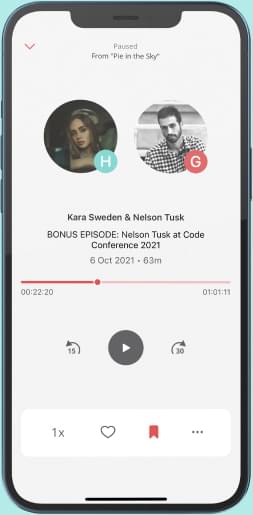
Learning Leadership Communication: A Conversation with David Tyler - Part 2
“There’s three groups of people. When there’s a crisis, there are three people you need to talk to, including your employees, your stakeholders, your suppliers, whatever, and the public… You’ve got to get out there and tell your employees it’s okay, you’re going to be safe, and you need to tell the managers beneath you that, hey, you’re going to be okay, here’s what we’re going to do. But if you’re not communicating on a crisis level, that’s horrible. But a company that is always communicating with its employees, its stakeholders, and the public, if it’s always doing that, then it becomes just a kind of a natural thing.” – David Tyler This episode is the second half of my conversation with media and communication coach David Tyler as we discuss the key to maintaining effective communications during a crisis, how remote work has changed the way we share knowledge, and what makes sound more important than ever. As always, if you have questions for my guest, you’re welcome to reach out through the links in the show notes. If you have questions for me, visit audiobrandingpodcast.com where you’ll find a lot of ways to get in touch. Plus, subscribing to the newsletter will let you know when the new podcasts are available and what the newest audio chats will be about. If you’re getting some value from listening, the best ways to show your support are to share this podcast with a friend and leave an honest review. Both those things really help – and I’d love to feature your review on future podcasts. (0:00:00) - Communication Strategies for Effective Leadership The second half of our discussion starts with David’s advice for business leaders looking to build both team rapport and a stronger brand. “A lot of times,” he says, “managers are just pushed up the ladder and given no training about how to be a better communicator. But I think probably the biggest thing that managers need to know is how to communicate vision.” We talk about some of the latest headlines and how they’ve tested each company’s communication strategies, and the technological barriers that he sees when it comes to making a connection. “One of the other things that I teach managers,” he says, “is that listening is 50% of the conversation, and I emphasize that with them. It’s important to listen actively, to put away your phone, [and] to put away any kind of distractions.” (0:10:03) - Media Interview Preparation and Communication Tips David shares his thoughts on branding and communicating through the media, and tips for anyone facing a surprise interview. “What do you think they’re going to ask?” he suggests. “And write those questions down and have a list of the questions with the answers, so that you already have an answer.” He offers a playful example of how to keep an interview on track when I ask him about his hair color. “That’s a really good question,” he quips, “but I think what we should talk about is the financial problems we’re having in Ottawa.” As he explains, “You need to have the things you want the public to know ready to go and then find a way to weave those things into the interview.” (0:13:33) - The Importance of Non-Verbal Communication As our conversation comes to a close, David and I talk about how much subtext can be carried by sound and all the non-verbal cues that surround it. “Meaning happens between the words,” he explains, “in the same way that a musician can play a song and then a great musician can take that exact same song, that exact same melody, and put so much meaning into it to drive you to tears.” We discuss AI’s role in the future of audio branding, and he shares an observation from...
From "Audio Branding"


Comments
Add comment Feedback